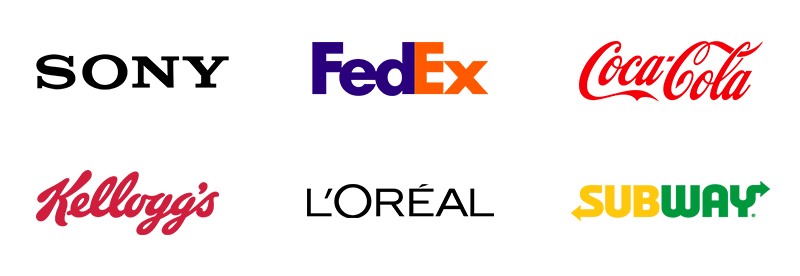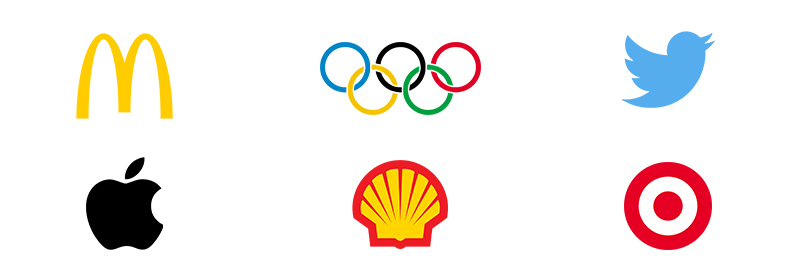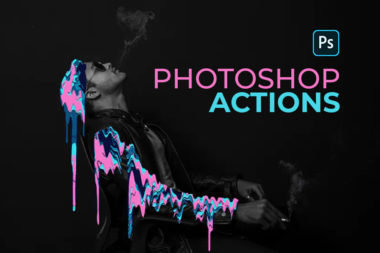It is important to know the basic types of logo when building your brand or starting a company. Your logo is a visual element which represents your personality and business.
Logos are seen in nearly all your marketing items like advertisements and products. Choosing the right kind of logo can produce great impact because it will represent your company effectively.
The five basic types of logo are wordmarks, lettermarks or monogram, symbol or picture, combination and emblem. How to choose the correct type for your business? Here’s the list to guide you.
1. Wordmark or Logotype
It is basically what is says, the logo is made out of word. Wordmark is usually the name of your company or organization.
Typography plays a great part when creating a wordmark logo. Take time on selecting the right font so can successfully convey the message of your brand. Make sure that you choose a much readable font.
This type is a good choice if you’re starting in business. As for wordmark logo, your company will be easily remembered as the name is the actual logo itself.
You will be spending too much on advertising and marketing a symbol logos like apple or nike.
One good strategy to make a wordmark logo interesting is the use of negative space. By utilizing negative space in your logo type, it provides an artistic style to your logo.
The Fedex logo is a great example of wordmark with negative space. Look how the arrow is created between the last letter “e” and the letter “x”.

2. Lettermark or Monogram
Lettermarks generally uses the initials of a company. It’s much more similar to wordmark but shorter.
If you have a lengthy company name, it is wise to take the initials so it will fit in a simple logo. Other reason for choosing lettermark is when your company is hard to pronounce for people from other countries.
Representing your company logo in a form of letter mark provides simplicity. It is very effective representing a brand by taking its initials as a logo to create simplicity.

3. Symbol or Pictorial
A symbol logo is a graphical design logo. In most cases the image is picture, abstract or stylized.
This represents a company or brand in a simple bold and confident manner. Logo symbols tell stories that communicate ideas, identify properties, services or products.
You’ll generally find these logos on large companies that have brands that serve the whole world with different languages.These logos become familiar because we see it almost every day and it leaves a mark in our memories about what it represents

4. Combination Mark
A combination mark utilizes wordmark and a symbol in one. This logo category is very flexible. You could use the symbol or the wordmark separately depending on context.
If you’re already an established company, redesigning your logo into a combination type provides adaptability on different platforms. You don’t have to worry separating the wordmark from the symbol since both are recognizable.
Notice how Nike uses their logo symbol swoosh on shoes, whereas it’s great to use the combination mark on letterheads, as example.

5. Emblem
An emblem logo is basically a text inside a symbol. The name of the company is usually encapsulated in a badge, seal or crest.
The emblem is quite similar to a combination mark. You have the company name and you have the design. We usually see this type of logo in government agencies, schools and organizations. This type of logo is less versatile unlike the other categories.
This category of logo gives us a traditional look and feel. A conventional appearance can be effective in some ways, it looks great in coffee or beer industries.
Just be mindful on the details of the design. Keep it neat and simple to be able to put it across all your marketing materials.

Conclusion
Take time and consider having thorough research about the logo for your business. This is something that will stick to your company for its entire existence.
Thanks for reading and I hope this helps you in your logo design project. Share if you like this article and leave a comment below if you have questions or suggestions.
Related Topics:

















